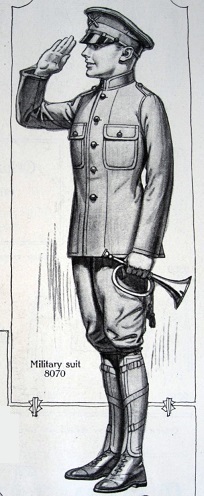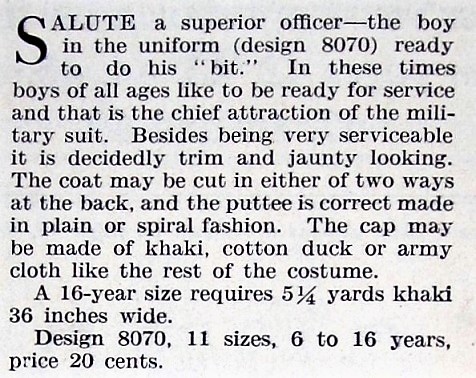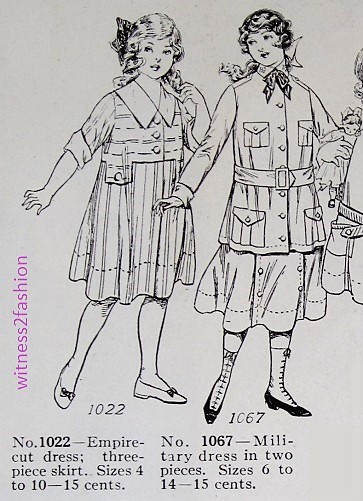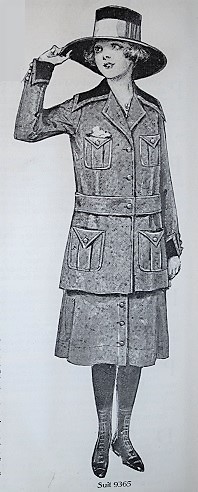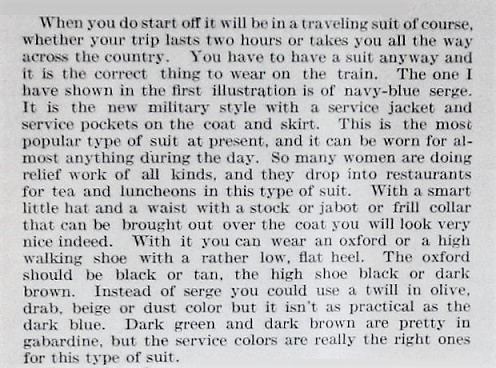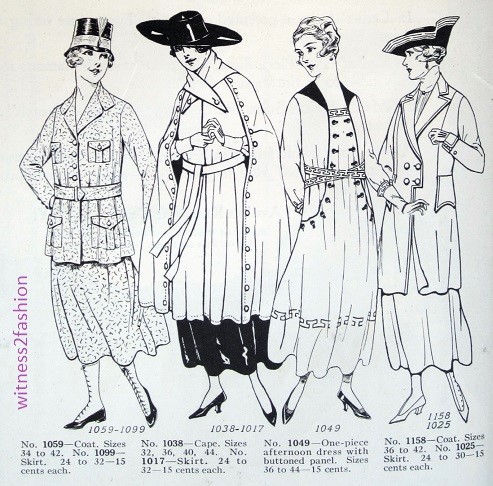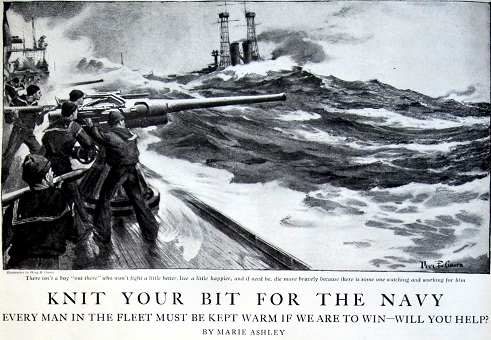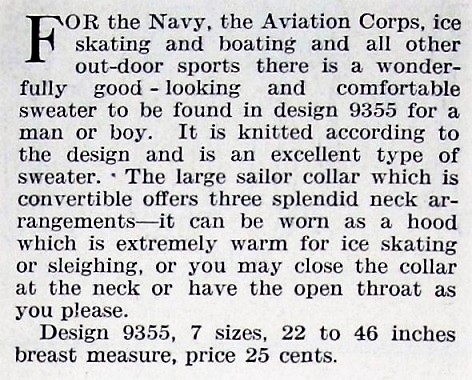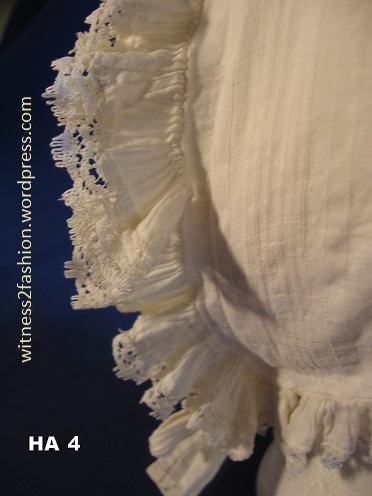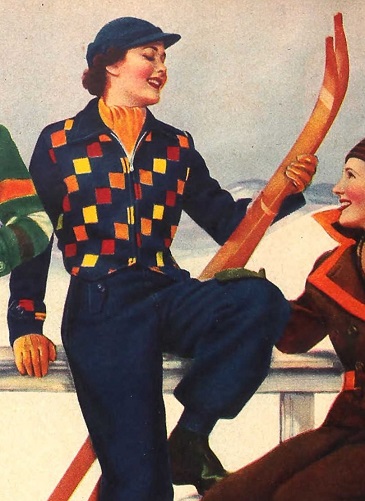
Housewife in an ad for Cocomalt, Woman’s Home Companion, September 1936.
Possibly the best costume research advice I ever got was to read old magazines and pay attention to the ads. Fashion coverage rarely goes into the kitchen, but ads for soap, appliances, foods and other homely products will show you images that were credible to their readers. They’re not any more realistic than our TV ads with perfectly maintained kitchens and gardens, but they presented an ideal of normal life.

Did most housewives dress like this in the evening? I doubt it. Koehler furniture ad, WHC, Oct. 1936.
Ads are aspirational. They hold out the dream that, if you buy this product, your life will be transformed. So, for a view of everyday clothing, they aren’t perfect; they show the way people wanted to look. But they’ll help you to get into the mindset of the period.

Most women wore an apron while washing dishes. However, this wrap dress with its two sizes of polka dots and sheer ruffles might give you some good design ideas. S.O.S. Ad, March 1935. Delineator.

O.K., that’s more realistic. Under that clean apron, she’s wearing a dress with sheer ruffles on the sleeves. S.O.S. ad, Feb. 1935. Delineator.

Using an electric floor polisher. Appliance ad, Oct. 1934. Delineator.
Hmmm. White collars and cuffs seem to be a theme.
The next three housewives come from a series of Depression Era ads for Royal Baking Powder, in which their tight family budgets are given; the women may be wearing their best house dresses, freshly washed and ironed for the photographer, but the ads had to be believable to readers on tight budgets themselves:

This young housewife is living on $900 a year (about $17 per week.) Royal Baking Powder ad, March 1934. Delineator.

The housewife at right prides herself on spending just a dollar a day for her family’s food, but she manages to look neat and clean. Royal Baking Powder ad, January 1935.

She married on $20 per week. Interesting dress, with sheer white ruffles. It looks like her coordinating apron is pinned to her dress. Royal Baking Powder ad, February 1934. Delineator.
I was interested to see that some women sensibly adopted the sleeveless dress for housework:

Doing housework in a chic sleeveless dress. S.O.S. ad, May 1934. Delineator.

Sleeveless dress in an ad for Gerber’s baby food. August 1937. Delineator.

Mother in sleeveless dress with her children. Illustration for an article on child rearing, 1935. Delineator.
Ads for Scot paper towels show many pretty but credible house dresses. [It’s hard to imagine a time when we had to be taught what to do with a paper towel, but that is the purpose of this thirties’ ad campaign.]

Ad for Scot paper towels, March 1935. House dresses were often made of lively, small-scale, floral print fabrics.

Ad for Scot paper towels, July 1937. White collar and cuffs on a plaid dress.

Ad for Scot paper towels, March 1936. Woman’s Home Companion. White collar and cuffs again.

A loose-sleeved plaid house dress. Ad for Scot paper towels, February 1936. WHC.

Wrap dress, in small floral print with sheer ruffled accents. Ad for Scot [bathroom] tissue, Nov. 1936.

Scot Paper towel ad, December 1936. New customers, unfamiliar with paper towels, would also need a holder.
… the ad campaign finally got around to a use that didn’t require a verbal description:

Ad for Scot paper towels, December 1936.
Oops! No house dress in that one. (I do get distracted by these little glimpses into the past….)
This woman’s clothing probably emphasizes the ease [no sweat, ladies!] of using this vacuum, rather than her normal working clothes.

A housewife and her Hoover. Nov. 1937, WHC. Women who wear high heels all the time find flat shoes uncomfortable, (my stepmother wore sturdy 2″ heels while cooking and cleaning) but these heels are rather high and thin for doing housework.
Whether women really vacuumed the house dressed like this is questionable. But I think that the dress worn by this woman demonstrating a washing machine is probably very close to realistic.

It was hard to use a mangle machine like this without getting wet. From an article about laundry, WHC, March 1936. That’s what I call a “wash dress.”
This isn’t.

From an ad for laundry soap — Fels Naptha. WHC, Sept. 1936. This woman’s dress says her laundry is done. It’s not the “wash day” dress she wears in the drawing.

This ad reminds us that work dresses were still very long in 1936. Large-scale plaid dress in an ad for Sun-Maid Raisins. WHC, March 1936.
Print dresses featured in many ads between 1934 and 1937:

An ad for Lux laundry soap shows a flowered print dress with sheer collar. August 1934, Delineator.

Lux laundry soap claimed to be easy on stockings. Lux ad, Oct. 1937. I can imagine this dress, with its cool neckline, becoming a house dress as it aged.

A crisp floral print dress in an ad for S.O.S. pads. December 1936. This dress could certainly leave the house.
That print dress resembles a “sport dress” available from Tom Boys:

This sport dress could be ordered for $3.95 in February 1937. Ad for Tom Boys; WHC. Hemlines are rising.
Life experience leads me to think that many comfortable, washable sports dresses began as “good” casual clothes but eventually became only “good enough for housework” when they were damaged or out of style.
Perhaps the most truthful ad showing what many women wore during the Depression is this one:

Photo of a healthy farm family, thanks to Nujol laxative. From a Nujol ad, April 1934, Delineator.

